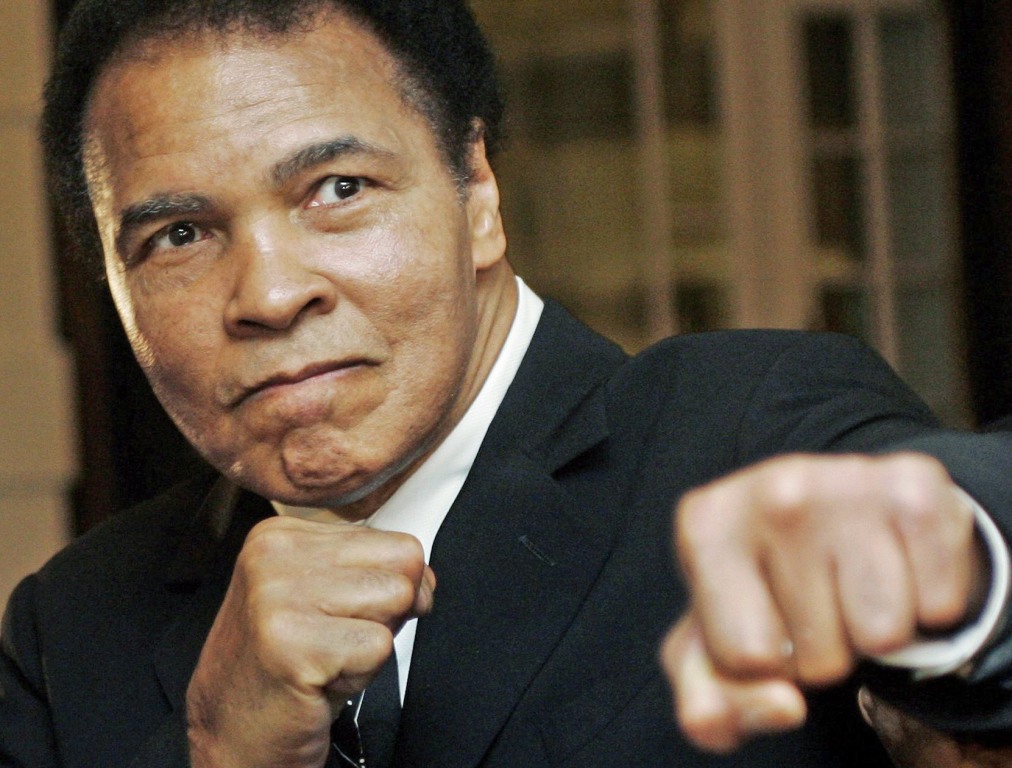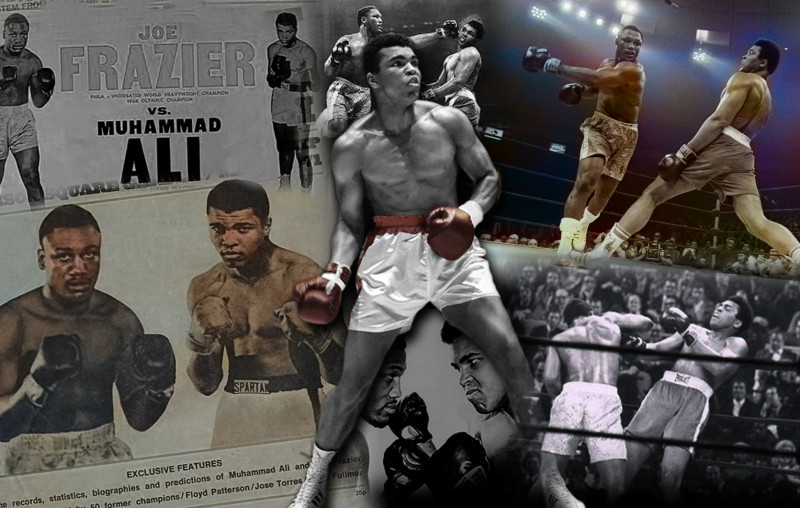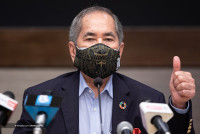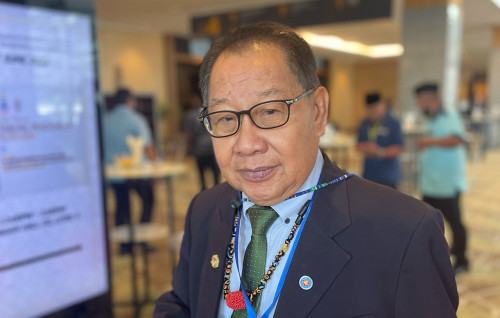HE had spoken generously of those who preceded him; even those he eventually collided with - the “Old Mongoose” Archie Moore, even Floyd Patterson, who he later flayed in the ring for refusing to call him by his new, ordained, “slave-free” name, Muhammad Ali.
"A man who has no imagination has no wings."- Muhammad Ali
Even early in his career, however, as the “Louisville Lip” Cassius Clay, there was no hint of a reference to the steely “Manassas Mauler” Jack Dempsey: yet somewhere deep within, Clay/Ali must have taken in Dempsey’s funny allusion to invincibility, “Don't worry honey, I’m too mean to die.”
Adopting the attitude and all the theatre from the world of professional wrestling, especially from an outlandish figure called Gorgeous George Wagner, the young Clay - Olympic Boxing Champion in Rome 1960 - began his road to the heavyweight championship of the world, by turning the boxing world - then a grim, secretive realm controlled largely by the mob - on its head.
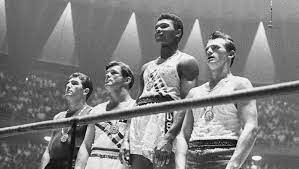
No fighter then represented the boxing world better than its champion Sonny Liston. Huge, hard, unsmiling, the mystery surrounding his origins adding to the menace that came, fatally, with his brutal knockout punch. The poet Amiri Baraka, writing in an earlier incarnation as Leroi Jones, captured Liston best, “Sonny Liston was…a heavy-faced replica of every whipped up woogie in the world. He was the underdeveloped have-not (politically naïve) backward country, the subject people, finally here to collect his pound of flesh.”
From the very announcement of the fight, Clay adopted an unorthodox, unpredictable, even suicidal approach to the match. He called Liston “a big, ugly bear…too ugly to be world champion.” His “motor mouth” took centre stage at the weigh-in between the contenders. Martha Jefferson, wife of the great champion - the Brown Bomber Joe Louis - observing Clay the challenger, leaned over to a confidant, and whispered, “that boy’s crazy.”
Clay-Liston 1 was extraordinary for all kinds of reasons. Expected, by most, to end up a massacre, it turned out, instead, to be an instruction in style. Clay - “loose limbed” - it was described, easy with the feet, dancing, transforming the ring as stage, not square, and always with the talking, talking, talking in mid fight.

Even the immersion of a kind of liniment in Clay’s eyes, leaving him blind for a whole round, could not stop the speed, trickery and velocity from baffling Liston who, never having the need to go beyond the first few rounds in most matches, appeared confused and bumbling - refusing, in the end, to get up from his corner after the sixth round, leaving Clay heavyweight champion of the world and vindicated in his claim to have “shook up the world.”
The transformation of Clay to Muhammad Ali, his friendship with the radical Malcolm X and his association with Black Muslim Movement - The Nation of Islam - initially inspired derision and contempt among the boxing establishment and a wider American public who expected its champions to abide by the accepted principle of being relentless sluggers and not very much else.
Ali’s early association with the shadowy Nation possibly protected him from the dangerous world of the boxing underground before that association itself turned exploitative.
Yet, “the greatest fight of my life,” as Ali himself confessed was awaiting him. Called for induction into the US military as the Vietnam War raged and young America stood up in protest, Ali refused to be inducted, issuing a statement just outside the indictment center, “It is in the light of my consciousness as a Muslim minister and my own personal convictions that I take my stand in rejecting the call to be inducted. … I find I cannot be true to my beliefs in my religion by accepting such a call. I am dependent upon Allah as the final judge of those actions brought about by my own conscience.”
Stripped of his boxing license, he retreated for a while from view. But the Vietnam War protests converged with the Civil Rights Movement, and in Tommie Smith and John Carlos’s black power salute in Mexico in 1968, sport discovered its age of political protest.
On a series of lecture tours in American university campuses and more importantly on popular TV shows, most notably with the redoubtable Howard Cosell at his corner, Ali set about mastering the art of constructing his myth.
In a surprising, unanimous decision, the Supreme Court overturned Ali’s indictment, paving the way for a match to reclaim his championship against Joe Frazier.
All the while Ali was fighting his case, sinewy Smokin’ Joe - tough, relentless, inexhaustible - had not yet been able to convince the world of being its “rightful champion.”
The fight, scheduled for Madison Square Garden on March 8, 1971, was dubbed ‘The Fight of the Century.” Boxing had by now, and because of Ali, spilled into celebrity. In the ringside seats were movie stars in the likes of Woody Allen and Diane Keaton, and Frank Sintara was Life magazine’s official photographer for the fight.
Ali appeared in lean and fine form, but found the restless, bobbing style of Frazier difficult and unwieldy. In the final round, Frazier landed a short, powerful left hook that floored Ali, leaving his jaw hanging. Ali rose by the fourth count, but Frazier won on points, delivering Ali his first defeat.
In Kuala Lumpur, the news made the headlines the next day alongside a side bar reporting the death of an elderly man somewhere in Kedah who, upon seeing Ali fall, uttered the words, “Ali Tumpas,” (Ali has fallen) suffered a heart attack and died.
.jpeg)
The death of the old man perhaps best mirrors another, growing dimension in the Ali myth - his appeal and convergence with the spirit of Third Worldism. Constricted by boxing rules and agencies in the United States during his indictment, he took his fights and myth to the rest of the world.
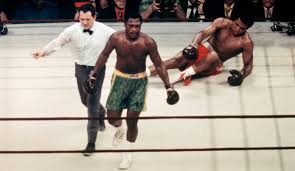
He fought the formidable George Foreman in Zaire in a fight fondly called the Rumble in the Jungle. In the Philippines, he fought Frazier for a third time in the Thrilla’ in Manila - his most grueling and bitter fight. Ali would recount, “we went to Manila as champions, Joe and I, and returned as old men.” For all the bitterness and acrimony that shrouded the Ali-Frazier rivalry, Ali was always gracious of Smokin’ Joe - “that’s one helluva man, and God Bless him” was Ali’s farewell upon Frazier’s death.
In Kuala Lumpur he beat a floundering Joe Bugner without breaking a sweat, while holding the country in thrall. His early morning jogs were captured so memorably by the pen of the cartoonist Lat.
On occasions he was seen with despots and dictators - Mobutu Sese Seko, Ferdinand and Imelda Marcos - yet always found his way, during morning jogs and surprise visits to the deepest recesses and crevices of decaying cities in which he held his fights.
In Kuala Lumpur, amidst all the celebration with the like of Kings, Prime Ministers and former Prime Ministers, Ali and Bugner made a visit to a kindergarten. To avoid crowding, the visits were separated, like a ring, into two sections. I was assigned the Bugner corner. And I cried. A teacher, Mrs. Selva, pretty, gentle, always with a wide smile, a friend of my mother’s, noticed, took my hand, and led me to the Ali corner to meet the giant. He put his hand on my head, ruffled my hair, and said, “these hands can hide a watermelon. Your head is smaller than a watermelon.”
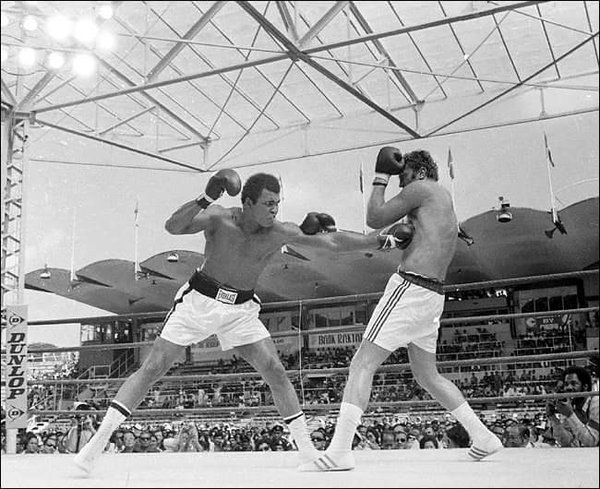
During the first Gulf war, the Parkinsons stricken Ali visited Saddam Hussein, requesting the release of American hostages; a request even the Butcher of Baghdad would not turn down, marking the second phase of the Ali legend - as bridge builder; a phase, as remarked by Bill Clinton at Ali's funeral, “that might be more important than his first.”
From the Louisville Lip to the Magnificent Mouth, to the King of the World, Ali was transformative: a boxing ballerina, a severe dyslexic who mastered words as rapid fair, a rapper and a people’s poet, a jester and preacher, the world indeed belonged to Ali, as he belonged to all of us: he, who could “hide a watermelon in these hands,” he “who was all he wanted be,” Muhammad Ali, the GOAT - the Greatest of All Time. – The Vibes September 4, 2021
